Texas is known for its warm, dry summers and unpredictable weather patterns. It can be hard to find bushes which can live to tell the tale and even thrive in those situations. However, there are many timber which are well-proper to Texas’ climate and might add beauty and price to your house. Whether you’re searching out shade, privacy, or surely want to add some greenery to your panorama, this closing guide will help you pick the first-rate bushes to your Texas home. From the long-lasting o.K.Trees to the lesser-recognised however similarly resilient pecan timber, we have were given you included with our top 10 listing of bushes which are sure to thrive in the Lone Star State. So, take a seat back, relax, and let us guide you thru the exceptional timber for Texas.
Introduction to the various Texas weather and its impact on tree choice
Texas is domestic to a various and precise climate that offers each challenges and possibilities when it comes to deciding on the proper trees for your panorama. From the sizzling warmness and arid situations of the west to the humid subtropical weather of the east, Texas includes a extensive variety of climate styles that could significantly have an effect on the success of tree boom.
In the western regions of Texas, where temperatures can leap well above 100 tiers Fahrenheit at some stage in the summer time months, it’s miles vital to choose timber which might be exceedingly tolerant of warmth and drought. These trees need to have deep root structures that permit them to access water from lower soil layers and feature adapted mechanisms to preserve moisture. Some popular selections for this place include the majestic Mexican sycamore, the rugged Texas persimmon, and the sturdy desert willow.
On the other hand, the jap components of Texas enjoy a more slight climate with higher levels of rainfall, making it conducive for a greater variety of timber. However, the humidity and low tropical storms can pose challenges in phrases of sickness and pest control. Trees like the iconic southern stay oak, the colorful crape myrtle, and the sleek magnolia are properly-applicable to thrive in this region, with their capability to tolerate each warmth and humidity.
In critical Texas, which lies in among the extremes of the west and east, timber that are adaptable to a huge range of situations are ideal. Species together with the versatile Texas ash, the hardy cedar elm, and the resilient Texas red okayare recognised for their potential to resist both warmness and bloodless, making them popular choices for this location.
Understanding the effect of the Texas weather on tree selection is critical for creating a thriving and sustainable panorama. By carefully thinking about the unique desires and traits of various tree species, you can make informed picks so as to ensure the long-time period fulfillment of your trees within the numerous climatic areas of Texas.
Factors to keep in mind when choosing timber for Texas
When deciding on bushes for the various climate of Texas, there are several vital elements to do not forget. The first and foremost is the place-unique climate conditions. Texas experiences a huge range of climates, from the humid subtropical regions inside the east to the arid deserts within the west. It’s essential to choose timber that could withstand the unique climatic conditions of your location.
Another aspect to bear in mind is the soil composition. Texas has quite a few soil kinds, which include clay, sandy loam, and limestone-based totally soils. Different timber have unique soil necessities, so it’s critical to select timber that may adapt to the soil composition for your area.
Furthermore, the water availability plays a extensive role in tree selection. Texas is vulnerable to intervals of drought, especially in the western regions. Opting for bushes which are drought-tolerant and may live to tell the tale with limited water resources is essential for their lengthy-time period fitness and survival.
The usual length and growth fee of the trees should also be taken into consideration. Consider the available space for your panorama and make certain that the chosen trees won’t outgrow the area or intervene with systems or power strains as they mature.
Additionally, it is worth thinking about the motive of planting the bushes. Are you looking for color, aesthetics, or natural world habitat? Different tree species offer diverse benefits, such as offering sufficient color, attracting pollinators, or imparting colourful foliage during the 12 months. Identifying your unique goals will assist slim down the alternatives and make sure you pick the most suitable bushes on your desires.
Lastly, it’s advisable to talk over with neighborhood arborists, horticultural specialists, or extension offerings to benefit treasured insights and recommendations based totally on your unique place inside Texas. These experts can offer steering on species that thrive for your region and offer advice on proper planting and care strategies.
By carefully thinking about these elements, you may make knowledgeable decisions when deciding on trees on your Texas panorama, main to thriving and exquisite additions to your out of doors space.
Texas local trees: Top five alternatives for thriving inside the nation
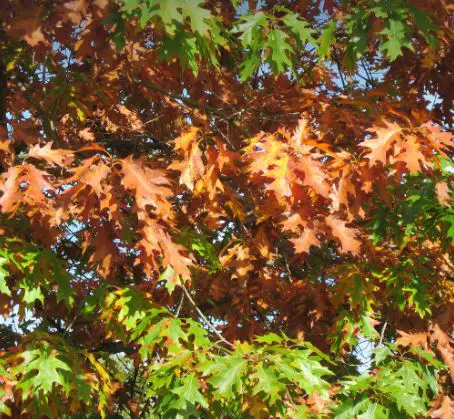
Texas is thought for its various panorama and precise weather, making it a hard environment for plenty bushes to thrive. However, there are several native tree species which have adapted to the tough situations and might flourish within the Lone Star State. In this section, we will explore the top 5 Texas local trees that are not simplest properly-desirable for the state but also upload beauty and cost to any panorama.
1. Texas Red Oak (Quercus buckleyi): This majestic tree is a real Texas local and can be determined at some stage in the kingdom. Known for its stunning fall foliage, the Texas Red Oak presentations colourful sunglasses of crimson, orange, and yellow, including a burst of colour to the panorama. It is also enormously adaptable and might tolerate a extensive range of soil kinds, making it an terrific preference for Texas gardens.
2. Texas Ash (Fraxinus texensis): The Texas Ash is a deciduous tree that prospers inside the warm and dry situations of Texas. With its glossy green leaves and appealing bark, it offers colour and splendor to any out of doors area. It is also recognised for its resilience to pests and illnesses, making it a low-upkeep preference for Texas owners.
Three. Texas Mountain Laurel (Sophora secundiflora): This small evergreen tree is famous for its fragrant purple vegetation that bloom in early spring. Besides its stunning aesthetics, the Texas Mountain Laurel is also recognized for its drought tolerance and capacity to evolve to numerous soil situations. It is a famous preference for including colour and fragrance to gardens and landscapes across Texas.
Four. Texas Sabal Palm (Sabal texana): As the country tree of Texas, the Texas Sabal Palm is a real icon of the state’s panorama. This gradual-growing palm tree is local to the coastal areas of Texas and can face up to sturdy winds and salt spray. With its fan-like leaves and particular trunk, it provides a hint of tropical splendor to any outside space.
Five. Texas Pecan (Carya illinoinensis): Known for its scrumptious nuts, the Texas Pecan tree isn’t always simplest a favourite amongst nut enthusiasts however also a valuable addition to any landscape. These huge, deciduous bushes offer enough colour and might live to tell the tale in a number of soil sorts. They are especially nicely-applicable for the jap and important regions of Texas.
When deciding on trees on your Texas panorama, it is critical to pick local species that could face up to the challenging climate and thrive inside the kingdom’s particular conditions. By opting for those top 5 Texas native timber, you could create a vibrant and sustainable panorama that complements the beauty of your surroundings at the same time as additionally supporting the local atmosphere.
Non-local trees that carry out properly in Texas: Top five selections
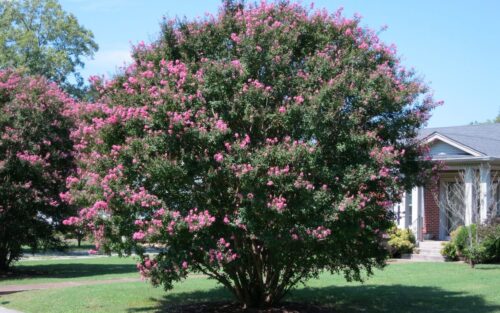
Texas is known for its numerous and once in a while challenging weather, making it vital to choose bushes that can thrive in its specific situations. While native bushes are often the move-to choice, there are non-native alternatives which have confirmed to carry out distinctly nicely in the Lone Star State. Here are the top five non-local timber that have successfully adapted to the Texas climate:
1. Crape Myrtle (Lagerstroemia indica): This beautiful tree, with its vibrant plants and delightful bark, is a famous preference for Texas landscapes. It flourishes inside the warm and dry summers and might tolerate a wide range of soil situations. Crape Myrtles come in diverse sizes, making them appropriate for one of a kind areas and are highly low-protection.
2. Chinese Pistache (Pistacia chinensis): Known for its remarkable fall foliage, the Chinese Pistache is a hardy tree which could withstand the cruel Texas warmth. It is also proof against pests and sicknesses, making it a dependable desire for landscapes. With its medium size and rounded cover, it provides sufficient color and visual interest.
3. Japanese Maple (Acer palmatum): While not native to Texas, the Japanese Maple has gained popularity for its beautiful foliage and particular growth dependancy. It prefers partial colour and nicely-drained soil, making it an tremendous choice for sure regions in Texas. With its delicate leaves and swish branches, it adds an fashionable contact to any panorama.
4. Southern Magnolia (Magnolia grandiflora): Though no longer local to Texas, the Southern Magnolia has emerge as an iconic symbol of the country. Its huge, aromatic blossoms and sleek evergreen leaves make it a visually putting tree. It prefers properly-tired soil and might tolerate each sun and shade, making it a flexible preference for lots Texas landscapes.
5. Chinese Tallow (Triadica sebifera): This deciduous tree, also called the Popcorn Tree, is nicely-applicable to the Texas weather. It thrives in diverse soil types and may tolerate each drought and flooding situations. Its vibrant fall shades and unique seed pods upload visible hobby to any landscape.
While those non-native timber have adapted well to Texas, it is important to don’t forget that they will nonetheless require a few care and preservation. Before planting any tree, it’s crucial to bear in mind elements including soil conditions, sun publicity, and water necessities to make certain their successful growth and durability on your Texas panorama.
Best bushes for color in Texas
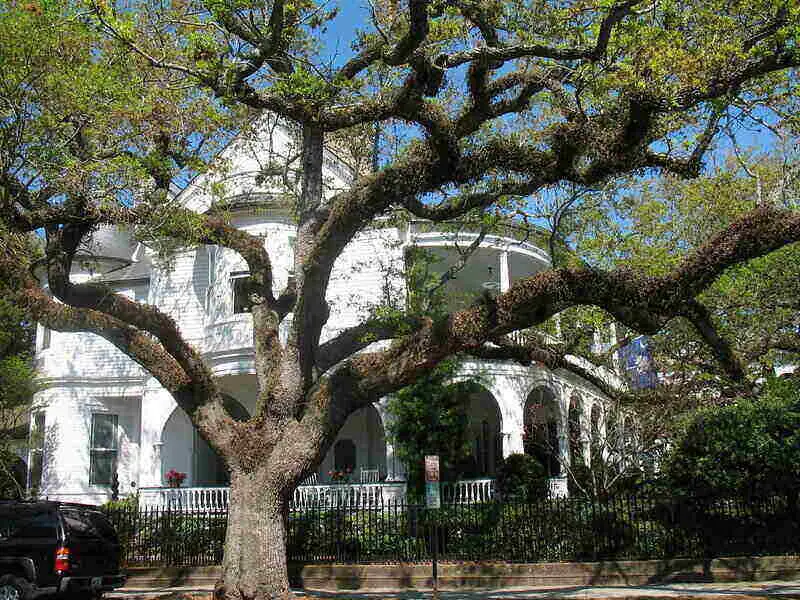
When it involves locating the high-quality timber for shade in Texas, it’s important to do not forget the precise weather and situations of the Lone Star State. With scorching summers and unpredictable climate styles, selecting bushes which could resist the heat and provide ample shade is essential.
1. Live Oak (Quercus virginiana): Known for its extensive-spreading cover, the Live Oak is a famous preference for color in Texas. Its dense foliage presents excellent insurance, and its potential to conform to various soil types makes it a versatile choice.
2. Cedar Elm (Ulmus crassifolia): With its appealing vase-formed form, the Cedar Elm is some other tree that thrives in the Texas weather. It gives ample color and can tolerate drought conditions, making it a dependable desire for homeowners.
Three. Texas Ash (Fraxinus texensis): The Texas Ash is a medium-sized tree that offers tremendous coloration for the duration of the hot summer season months. With its colourful inexperienced leaves and resistance to pests and illnesses, it is a low-maintenance alternative for colour seekers.
4. Mexican Sycamore (Platanus mexicana): This rapid-growing tree is understood for its huge, coronary heart-fashioned leaves that create a dense canopy. The Mexican Sycamore is an splendid desire for shade in Texas, and its putting white bark provides visible enchantment to any landscape.
5. Shumard Oak (Quercus shumardii): As one of the maximum not unusual o.K.Species in Texas, the Shumard Oak offers a large and spreading canopy that provides sufficient color. Its colourful fall foliage provides a splash of shade to the landscape, making it a favorite among many owners.
6. Pecan (Carya illinoinensis): Known for its scrumptious nuts, the Pecan tree also gives superb coloration coverage. It calls for enough area to develop and flourishes in well-draining soil, making it a super preference for large landscapes.
7. Chinese Pistache (Pistacia chinensis): The Chinese Pistache is a robust and adaptable tree that gives dense coloration and exquisite fall color. It can tolerate warm and dry conditions, making it a appropriate choice for Texas landscapes.
Eight. Texas Red Oak (Quercus buckleyi): With its sleek, darkish inexperienced leaves and spreading cover, the Texas Red Oak is an great colour tree desire. It can face up to the tough Texas weather and provides splendor to any out of doors area.
9. Bald Cypress (Taxodium distichum): While usually discovered close to water our bodies, the Bald Cypress also can thrive in drier areas. Its feathery foliage creates a mild and airy coloration, making it a unique and visually appealing preference for Texas landscapes.
10. Mexican Plum (Prunus mexicana): The Mexican Plum is a small to medium-sized tree that offers dappled color with its delicate, white flowers and small fruit. It is nicely-applicable for smaller areas and may tolerate a number soil situations.
When choosing timber for color in Texas, it is vital to pick types that are native or properly-tailored to the area. By thinking about elements like warmth tolerance, water requirements, and overall sturdiness, you may create a shaded oasis for your backyard that will thrive within the Texas weather.
Top timber for attracting flora and fauna and promoting biodiversity in Texas
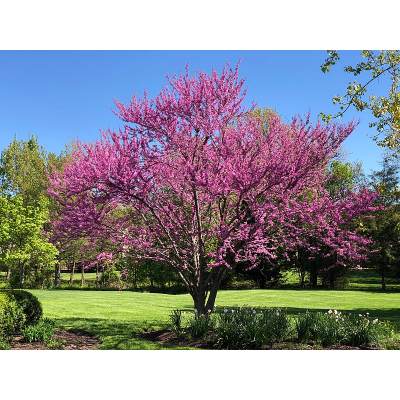
Texas is understood for its diverse and colourful wildlife, making it a haven for nature fanatics and wildlife fans alike. If you are trying to create an surroundings that supports a rich form of flora and fauna and promotes biodiversity in your own backyard, choosing the proper trees is crucial. Here are the pinnacle 10 trees for attracting natural world and promoting biodiversity in Texas.
1. Live Oak: This iconic Texas native presents awesome colour and draws a wide variety of birds with its acorns, making it a super choice for selling chicken diversity.
2. Texas Redbud: With its vibrant purple plant life in early spring, the Texas Redbud now not handiest adds splendor on your panorama however also attracts butterflies, bees, and hummingbirds, improving the general biodiversity.
3. Eastern Red Cedar: This evergreen tree is not best a favorite among Texans for its drought tolerance but also draws quite a few birds, along with cedar waxwings and American goldfinches, with its berries.
Four. American Sycamore: With its large, exclusive leaves and peeling bark, the American Sycamore is a magnet for butterflies and gives nesting sites for various fowl species.
5. Mexican Plum: This small tree bursts right into a lovely show of aromatic white plant life in early spring, attracting bees, butterflies, and different pollinators essential for a thriving ecosystem.
6. Texas Ash: Known for its capability to tolerate both drought and flooding situations, the Texas Ash presents meals for caterpillars and draws a big range of birds with its small fruits.
7. Mexican Buckeye: The showy red flora of the Mexican Buckeye attract hummingbirds and butterflies, while its seeds are a crucial meals supply for birds like the Northern bobwhite.
8. Desert Willow: This drought-tolerant tree produces lovely trumpet-shaped plants which can be impossible to resist to hummingbirds, bees, and butterflies, adding a touch of beauty to any landscape.
Nine. Texas Persimmon: This small, deciduous tree produces sweet fruit this is relished by way of birds and mammals alike. It additionally attracts pollinators with its fragrant white plant life.
10. Bald Cypress: Although primarily discovered in wetland areas, the Bald Cypress is a splendid tree that supports a diverse range of natural world. Its cones and foliage offer meals and safe haven for various bird species, at the same time as its staggering top offers nesting websites for raptors.
By incorporating those pinnacle bushes into your Texas panorama, you could create a thriving habitat that draws a plethora of wildlife and promotes biodiversity. Not most effective will you be providing crucial resources for local species, but you may additionally create a beautiful and sustainable surroundings to your personal backyard.
Low-renovation timber that could resist Texas’ harsh conditions
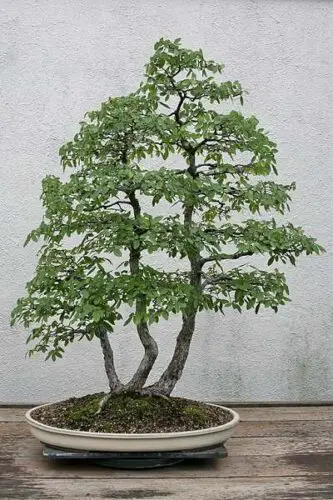
When it involves landscaping in Texas, it is essential to pick bushes that could withstand the harsh situations of the state. With sizzling summers, unpredictable climate patterns, and constrained water sources, it is important to pick low-protection timber that can thrive in this challenging environment.
1. Live Oak (Quercus virginiana): Known for its strength and toughness, the Live Oak is a popular preference for Texas landscapes. It has a wide cover that provides sufficient colour, making it best for decent summers. This tree is also drought-tolerant and can withstand robust winds.
2. Texas Red Oak (Quercus buckleyi): This native Texas tree is well adapted to the state’s weather. It has stunning fall foliage and can tolerate each drought and warmth. The Texas Red Oak is likewise proof against pests and illnesses, making it a low-protection choice.
3. Mexican Plum (Prunus mexicana): As a small to medium-sized tree, the Mexican Plum is an high-quality preference for each city and rural landscapes. It produces fragrant white vegetation in spring and gives delicious fit to be eaten plums. This tree can tolerate a huge variety of soil conditions and is drought-tolerant as soon as hooked up.
4. Pecan (Carya illinoinensis): Known for its scrumptious nuts, the Pecan tree is a fave in Texas. It is a big tree with a spreading canopy, imparting color inside the warm summer months. Pecan timber require enough water in the course of established order but can face up to drought once mature.
Five. Desert Willow (Chilopsis linearis): The Desert Willow is a small to medium-sized tree that flourishes in Texas’ arid regions. It produces stunning trumpet-shaped flowers in diverse shades, attracting pollinators like butterflies and hummingbirds. This tree is drought-tolerant and may tolerate terrible soil situations.
6. Cedar Elm (Ulmus crassifolia): The Cedar Elm is a hard and adaptable tree that may tolerate Texas’ severe situations. It has a graceful, vase-formed shape and offers brilliant colour. This tree is drought-tolerant and proof against pests and illnesses.
7. Texas Mountain Laurel (Sophora secundiflora): Known for its aromatic purple flowers, the Texas Mountain Laurel is a lovely addition to any panorama. It is drought-tolerant and might face up to warmness and bad soil situations. However, it calls for properly-tired soil to prevent root rot.
Eight. Lacey Oak (Quercus laceyi): The Lacey Oak is a small to medium-sized tree this is local to Texas. It has specific, lace-like foliage and produces acorns that attract natural world. This tree is drought-tolerant and can withstand warm and dry conditions.
Nine. Chinese Pistache (Pistacia chinensis): The Chinese Pistache is a medium-sized tree that provides vibrant fall foliage in shades of purple, orange, and yellow. It is drought-tolerant, heat-tolerant, and can adapt to various soil conditions. This tree is likewise proof against pests and sicknesses.
10. Anacacho Orchid (Bauhinia lunarioides): This small tree is local to Texas and produces sensitive, orchid-like flora in spring. It can tolerate heat, drought, and poor soil situations. The Anacacho Orchid adds splendor to any panorama even as requiring minimum preservation.
When selecting trees on your Texas panorama, maintain in thoughts their adaptability to the neighborhood weather, their water necessities
Trees for extraordinary areas of Texas: Gulf Coast, Hill Country, West Texas, and many others.
Texas is a big state with diverse landscapes and climates, and selecting the proper timber on your precise vicinity is essential for his or her long-time period survival and boom. In this section, we are able to explore the pinnacle tree species that thrive in unique areas of Texas, consisting of the Gulf Coast, Hill Country, West Texas, and greater.
1. Gulf Coast: The Gulf Coast area reports high humidity, intense heat, and occasional hurricanes. Trees that thrive in this area include the Southern Live Oak, acknowledged for its lovely spreading cover and resilience to salt spray, and the Crape Myrtle, which dazzles with its colourful flowers throughout the summer time.
2. Hill Country: The Hill Country place is characterized by means of its rugged terrain, rocky soils, and hot, dry summers. Trees that thrive in this area include the Texas Mountain Laurel, a small evergreen tree with aromatic red flowers, and the Ashe Juniper, a hardy and drought-tolerant tree that gives terrific flora and fauna habitat.
3. West Texas: West Texas is thought for its arid conditions, strong winds, and hot temperature fluctuations. Trees that thrive on this difficult surroundings consist of the Desert Willow, which showcases beautiful trumpet-fashioned plant life and may face up to drought conditions, and the Texas Red Oak, an impressive tree that adds vibrant fall colorations to the landscape.
4. Central Texas: Central Texas studies a combination of climates, with warm summers and mild winters. Trees that thrive on this place encompass the Texas Persimmon, a small tree with glossy leaves and safe to eat fruits, and the Cedar Elm, a hardy tree with a sleek increase addiction and outstanding drought tolerance.
5. East Texas: East Texas is characterised by way of its lush forests, high rainfall, and humid climate. Trees that thrive in this place include the American Sycamore, a massive and majestic tree that flourishes in moist soils, and the Sweetgum, known for its hanging fall foliage colorations and adaptableness to numerous soil kinds.
Remember, when choosing bushes for your particular place, it’s miles crucial to do not forget elements inclusive of soil type, sun publicity, and water availability. Consulting with neighborhood nurseries or arborists can offer treasured insights and steerage in selecting the proper tree species on your region. By deciding on timber which might be nicely-suitable in your area, you may make sure their a success boom and contribution to the splendor of your Texas panorama.
Tips for planting and worrying for trees in Texas
When it comes to planting and caring for trees in Texas, there are a few crucial tips to keep in mind. The hot and regularly dry climate of Texas can gift particular demanding situations, but with the right knowledge and care, your bushes can thrive.
First and fundamental, it is important to select tree species which might be nicely-perfect for the Texas climate. Some of the top trees for thriving in Texas consist of the Texas Red Oak, Cedar Elm, Mexican Plum, and the Texas Ash. These bushes have adapted to the local conditions and are much more likely to withstand the heat and drought that Texas regularly studies.
Before planting your trees, it’s far critical to pick the ideal vicinity. Consider elements including daylight, soil conditions, and proximity to other structures or bushes. Most bushes require enough daylight, so choosing a spot with at least six hours of direct sunlight per day is right. Additionally, it’s miles critical to ensure that the soil is well-draining to prevent waterlogged situations that may be unfavourable to tree fitness.
Proper watering is essential, particularly for the duration of the status quo length. Newly planted timber require normal watering to help them establish their root systems. It is suggested to water deeply and seldom, allowing the soil to dry out slightly between waterings. This encourages the roots to develop deeper into the soil, making the tree greater resilient to drought situations.
Mulching across the base of the tree also can be beneficial. A layer of organic mulch, along with wood chips or shredded bark, enables to conserve moisture, modify soil temperature, and suppress weed growth. Be certain to leave a small gap between the mulch and the trunk of the tree to save you moisture buildup and capacity rot.
Regular pruning is another crucial factor of tree care in Texas. Pruning facilitates to keep the tree’s form, put off dead or diseased branches, and promote healthy increase. It is recommended to prune all through the dormant season to reduce pressure at the tree.
Lastly, ordinary inspections for pests and diseases are vital. Texas is domestic to various pests and sicknesses that can have an effect on timber, together with o.K.Wilt and cotton root rot. Early detection and spark off remedy can prevent massive harm and hold the fitness of your trees.
By following these tips for planting and worrying for trees in Texas, you could make certain that your bushes not most effective live on however thrive within the tough weather. With right selection, planting, watering, pruning, and pest control, your trees will offer shade, beauty, and environmental benefits for years to come.
Final recommendations for deciding on the proper tree on your Texas panorama
In conclusion, deciding on the right tree on your Texas landscape calls for cautious attention and research. Texas is a diverse country with varying climates, soil sorts, and rainfall patterns, which means that that no longer all trees will thrive in every place. However, there are numerous bushes that have demonstrated to be resilient and adaptable to the Texas weather.
Based on our research, the pinnacle 10 bushes for thriving in Texas are:
- 1. Live Oak: A classic Texas tree acknowledged for its electricity and beauty.
- 2. Texas Red Oak: A speedy-growing tree with colourful fall foliage.
- 3. Mexican Plum: A small, ornamental tree with delicate white flowers.
- 4. Cedar Elm: A drought-tolerant tree with a graceful, arching cover.
- 5. Pecan: Known for its scrumptious nuts, this tree also offers enough shade.
- 6. Texas Ash: A medium-sized tree with attractive, smooth foliage.
- 7. Texas Mountain Laurel: A fragrant tree with beautiful crimson blooms.
- 8. Vitex: A low-renovation tree that attracts butterflies and bees.
- 9. Mexican Sycamore: A speedy-growing tree with placing white bark.
- 10. Texas Persimmon: A small tree with safe to eat fruit and beautiful fall shade.
When choosing a tree to your Texas landscape, it is essential to don’t forget factors including the tree’s boom price, size at adulthood, water requirements, and ability to resist intense temperatures. Additionally, don’t forget any precise wishes or choices you can have, which includes preferred flower shade or fruit production.
Remember to also keep in mind the overall aesthetics of your landscape and how the tree will suit into the prevailing layout. A well-deliberate and thoroughly decided on tree can beautify the splendor of your home and offer numerous benefits, including color, natural world habitat, and stepped forward air first-class.
Before making a final decision, discuss with nearby professionals, such as arborists or horticulturists, who have information and revel in particular to the Texas vicinity. They can offer treasured insights and hints based totally to your particular place and landscape conditions.
